ebleeds in dogs can cause concern for their owners. In this post, we’ll look at the 12 various reasons of nosebleeds in dogs and how to stop the bleeding. Continue reading to see how you can keep your furry buddies healthy and comfortable.
A nosebleed, as the name implies, is when your dog’s nose bleeds or produces bloody discharge. The precise name for a nosebleed is “epistaxis.” Blood may flow from either nostril, depending on the underlying cause. The blood can come from the nostrils, nasal passageways, or nasopharynx.
Nosebleeds can be moderate and short-lived, or severe and cause major blood loss. Some nosebleeds go undiscovered until small amounts of blood appear when the dog sneezes, but others leak continually onto the ground.
How to Stop Nosebleeds at Home in Dogs
If you realize your dog has a nosebleed, your first inquiry could be how to stop it. If there are only one or two droplets of blood, don’t be too concerned. However, if there is more blood, you can try these measures to assist stop your dog’s nosebleed:
Stay Calm:
Try to remove your furry friend from any noisy or chaotic areas. If you’re at home, look for a particularly quiet place. Stress and excitement can raise your dog’s blood pressure and exacerbate the bleeding.
Apply Ice to the Bridge of the Nose:
Take an ice pack, wrap it in a paper towel or cloth, and gently apply it to the bridge of your dog’s nose. The cold will constrict local blood vessels and help slow the bleeding.
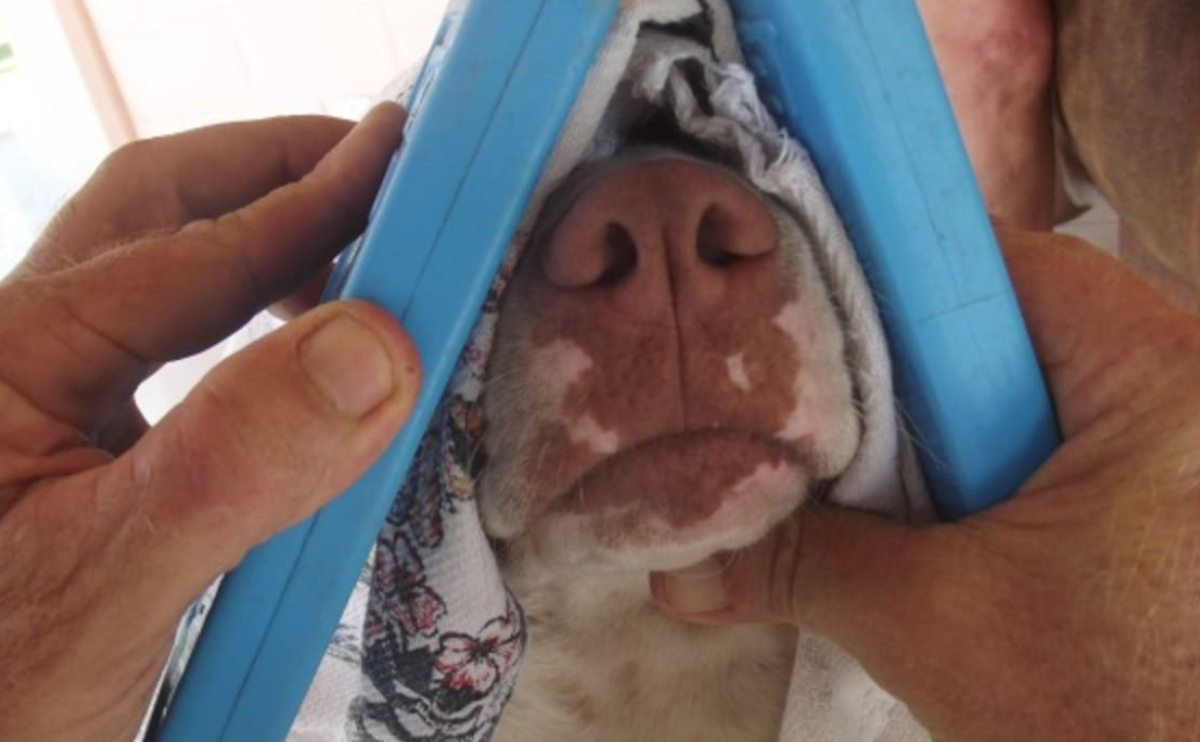
Do Not Insert Anything into Your Dog’s Nose:
Don’t put anything up your dog’s nose to halt the bleeding. While it may appear enticing because people can do this for their own nosebleeds, inserting materials such as gauze or tissues can be uncomfortable and cause your dog to sneeze, which can exacerbate the bleeding.
Notify Your Veterinarian:
If your dog is bleeding heavily, if the bleeding has not stopped after a few minutes, or if your dog exhibits any other signs of illness or injury, you should seek immediate medical attention to reduce the bleeding and establish the underlying cause. Even if you are able to stop the bleeding and your dog appears to be fine, it is typically a good idea to see your veterinarian during normal business hours. This manner, your veterinarian can conduct the required tests to determine why your dog had a nosebleed.
What Can Cause Nosebleeds in Dogs?
While some reasons of nosebleeds in dogs are obvious, others are less evident. If your dog has a nosebleed while rushing around the room and collides with a wall or doorframe, the cause is likely evident. However, in some cases, the cause may be less obvious, and you may need to consult your veterinarian. Factors that may cause nosebleeds in dogs include:
Trauma:
Sometimes trauma can be simple, such as your dog not being able to stop quickly while excitedly turning indoors or not noticing that a glass door is closed. More severe trauma examples include falling from a height or being hit by a car. In these cases, if the nose was injured, a nosebleed is very likely.
Nasal Tumors or Cancer:
Nasal tumors can affect one or both nostrils. This can indicate a localized tumor (or other localized issue) rather than bleeding affecting both sides.
Additionally, many types of extra-nasal cancers can increase the risk of epistaxis. These include:
- Lymphoma in dogs
- Hemangiosarcoma
- Multiple Myeloma
- Leukemia
Medications and Drug Reactions:
Nonsteroidal anti-inflammatory medicines can increase the risk of nosebleeds by inhibiting blood clotting factors. This increases the likelihood of bleeding from the sensitive mucous membranes within the nose. There are various drugs designed specifically for dogs (such as firocoxib and carprofen). Fortunately, nosebleeds are an uncommon side effect of these medications.
Adverse reactions to other drugs are uncommon but possible. Nosebleeds have been reported as a side effect of some hormone therapies and chemotherapy medicines.

Poison Exposure
Rodent poison (i.e., rodenticide) works by reducing a rodent’s ability to clot blood, leading to fatal internal bleeding. Unfortunately, many commercially available rodenticides can cause the same horrific death in dogs and cats. It is crucial to keep these poisons out of your dog’s reach.
Foreign Objects
Dogs love to sniff around while exploring outdoors. In the process, foreign materials, such as foxtail grass, can enter their nostrils and become lodged in the back of the nasal passages. This can irritate the nasal mucosa, causing the dog to sneeze frequently, which often leads to nosebleeds.
Dental Disease
When dental disease is present in dogs, it can lead to significant bone infection or even bone loss beneath the surface of the gums. Therefore, dental disease affecting the teeth in the upper mouth can cause issues in the nasal cavity. An example of this is an oronasal fistula, characterized by a small opening between the nasal cavity and the oral cavity. This connection can lead to infection and nosebleeds.
Fungal Infections
While certain bacterial and viral infections can be transmitted through inhalation of particles via the nose, the inhalation of fungal spores can be far more devastating. Fungal infections such as Aspergillus fumigatus, Blastomyces dermatitidis, and certain Penicillium species can spread to the nasal cavity and other areas of the upper and lower respiratory tracts.
The consequences of these fungal infections include pneumonia-like symptoms, nosebleeds, and various other clinical signs. A dog may require months of treatment, and some infections can last a lifetime.
Tick-Borne Diseases
Tick-borne diseases such as Ehrlichia canis and Babesia gibsoni can cause many clinical signs in dogs, including fever, limping, and lethargy. Since these infections can affect the dog’s ability to clot blood, tick-borne diseases can also lead to nosebleeds.
Autoimmune Diseases
If a dog has an autoimmune disorder, this means the immune system mistakenly initiates a response against the dog’s own cells. In other words, the immune system, which typically attacks foreign invaders, is attacking the normal components of the dog’s body.
Patients with immune-mediated thrombocytopenia suffer from low platelet counts. This occurs because the immune system destroys platelets, which are crucial for clot formation. Without enough platelets to help with clotting, nosebleeds can occur.

Bone Marrow Disorders
Certain diseases and medications that inhibit or suppress bone marrow can lead to a decrease in overall platelet production, increasing the risk of epistaxis.
Hyperviscosity Syndrome
When there is too much protein in the blood, the liquid component (i.e., plasma) does not have enough space, making the blood very thick or viscous. The increased pressure caused by this thicker fluid can lead to the rupture of blood vessels, resulting in blood loss. Nosebleeds are one way the body can lose blood.
Liver or Kidney Failure
The liver produces most of the clotting factors, so it is understandable that liver disease in dogs can lead to a decrease in the production of these factors. Without clotting factors, blood cannot coagulate, making the dog prone to spontaneous bleeding, such as nosebleeds.
Chronic kidney failure in dogs can lead to high blood pressure (hypertension). The increased pressure in the vessels can make capillaries more fragile, potentially causing bleeding in various locations, including the nose.
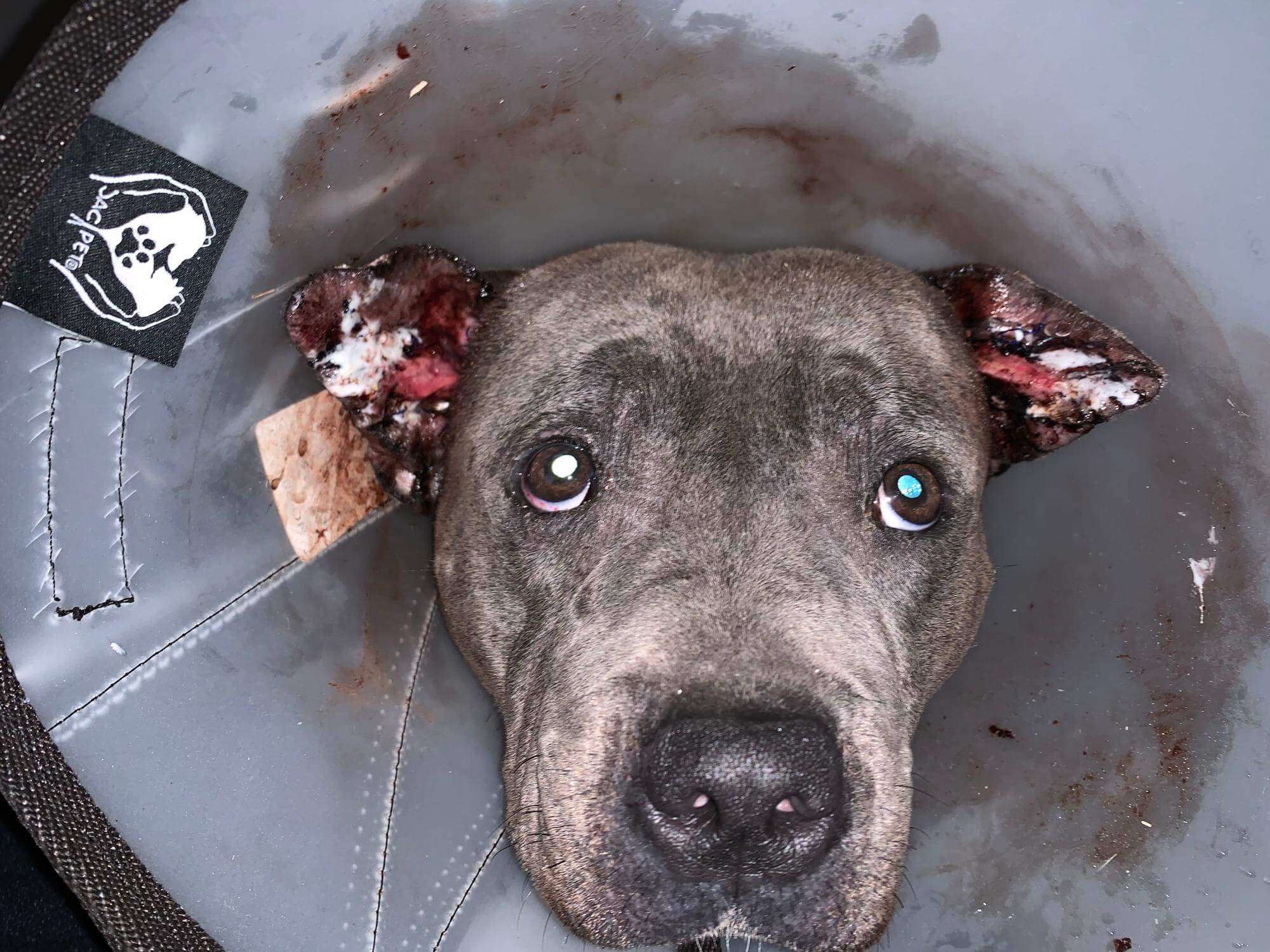
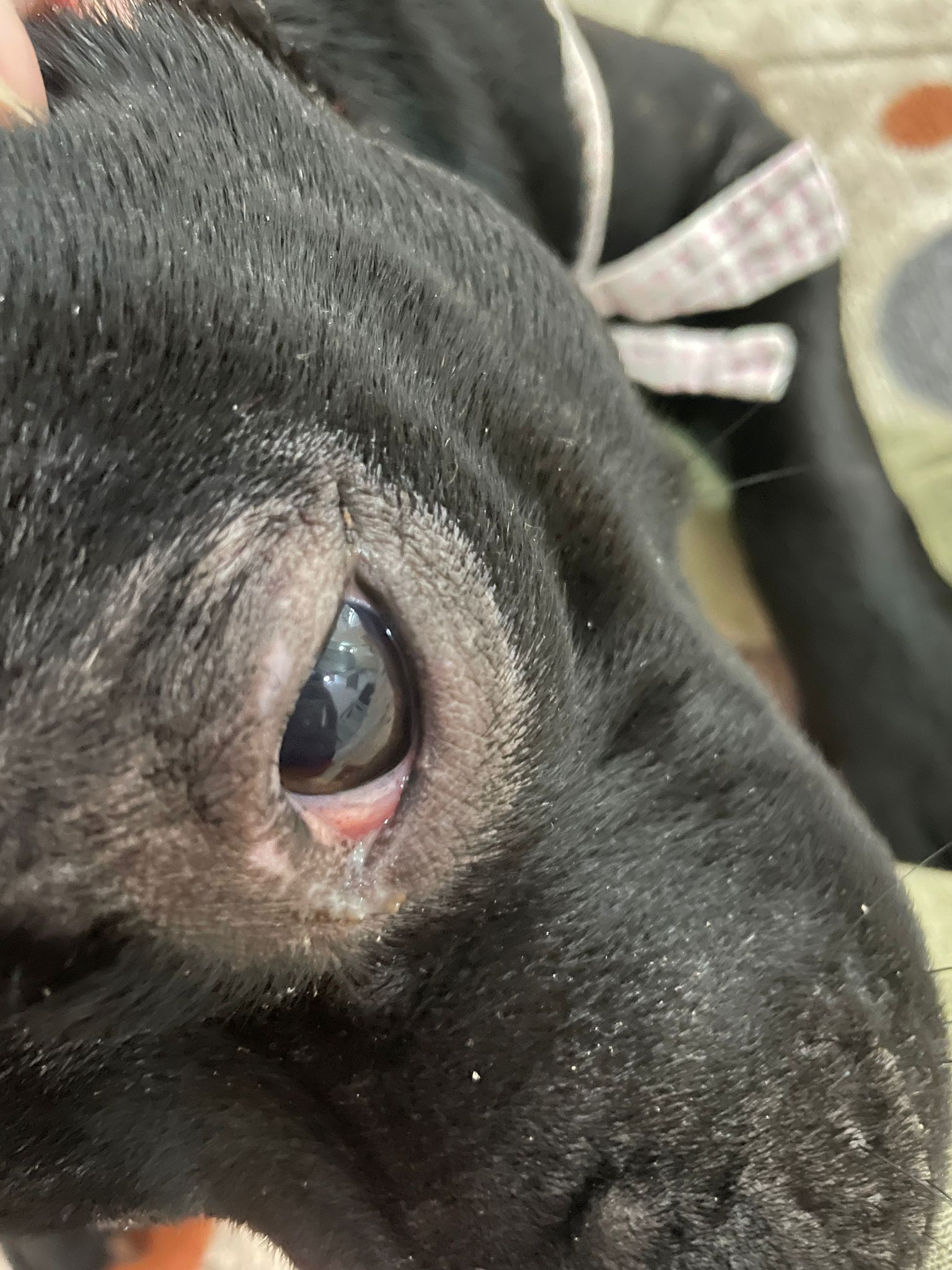
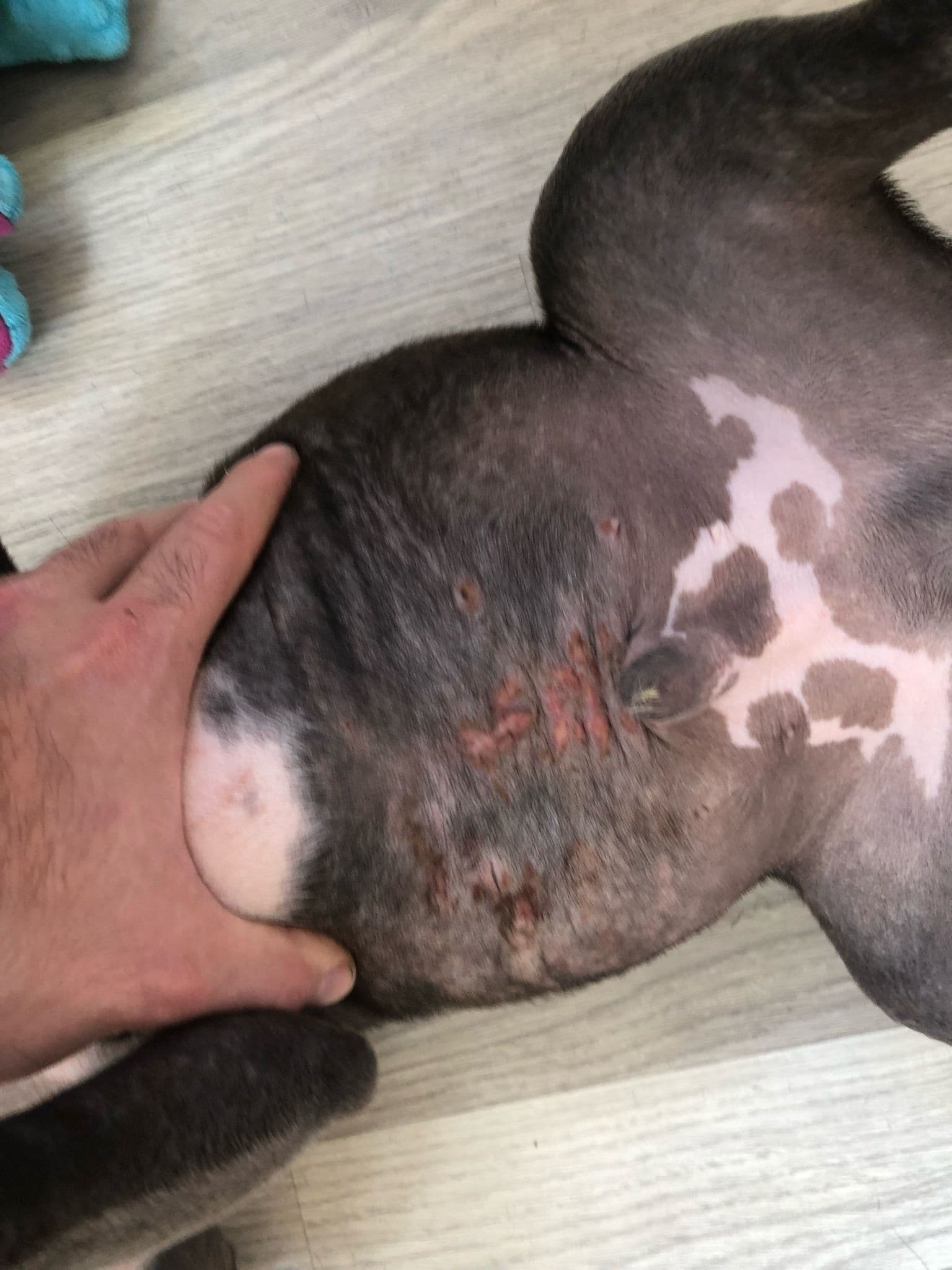
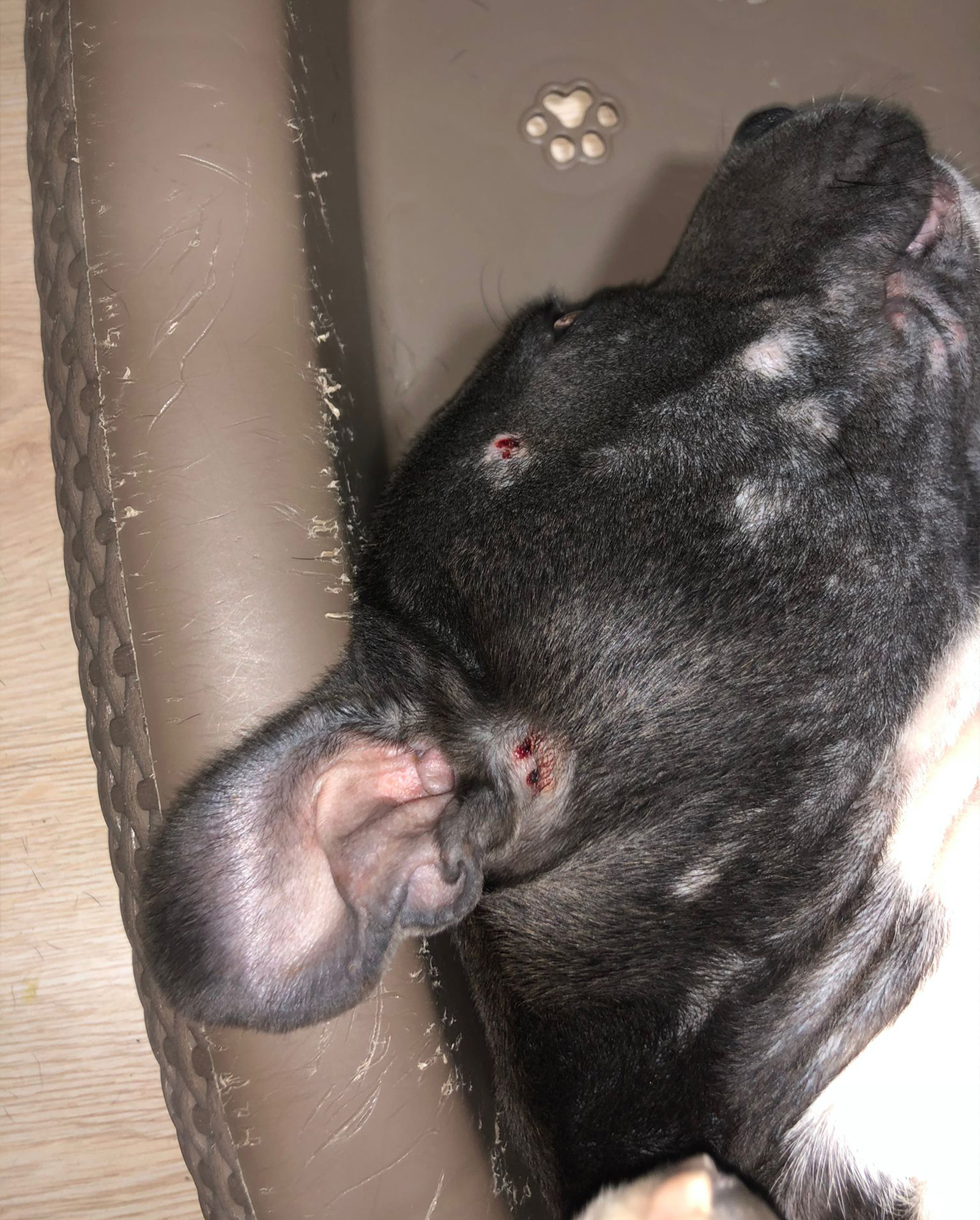

Most Read Articles
Urinary Tract Infections in Dogs: Symptoms and Treatment Methods
Urinary tract infections in dogs are prevalent, particularly in females. Pay attention to symptoms to...
Jun
Adopting an English Staffordshire Bull Terrier Puppy: What You Need to Know
The Staffordshire Bull Terrier is a dog breed known worldwide for its loyalty and affectionate...
Sep
Gut Health in Dogs: Important Signs You Should Watch For
Dogs’ digestive systems break down food to produce energy, development, and nutrients required for a...
Jul